Abstract
The etiology of the purple urine bag syndrome (PUBS), in which the urinary catheter bag of some elderly patients develops intense purple coloration, was studied. The purple was found to be a mixture of indirubin dissolved in the plastic and indigo on its surface. Six patients with PUBS were studied, and Providencia stuartii was isolated from the urine of five and Klebsiella pneumoniae was isolated from the urine of one. These strains produced indigo in 7.9 mM indoxyl sulfate-containing agar. One hundred and fifty isolates of 41 species of bacteria were tested for their ability to produce indigo on agar containing indoxyl sulfate, but only 17 of 27 strains of P. stuartii, a single strain of Klebsiella pneumoniae, and Enterobacter agglomerans were positive. All of the indigo-producing bacteria had an indoxyl phosphatase with a pI of 6.4. This enzyme also possessed indoxyl sulfatase activity and was not present in strains that were unable to produce indigo from indoxyl sulfate. We conclude that PUBS results from the decomposition of urinary indoxyl sulfate to indigo and indirubin by bacteria (notably P. stuartii). As elderly catheterized patients often have high urinary indoxyl sulfate levels and colonization of their urinary tract with P. stuartii, the condition is most commonly seen in them.
Full text
PDF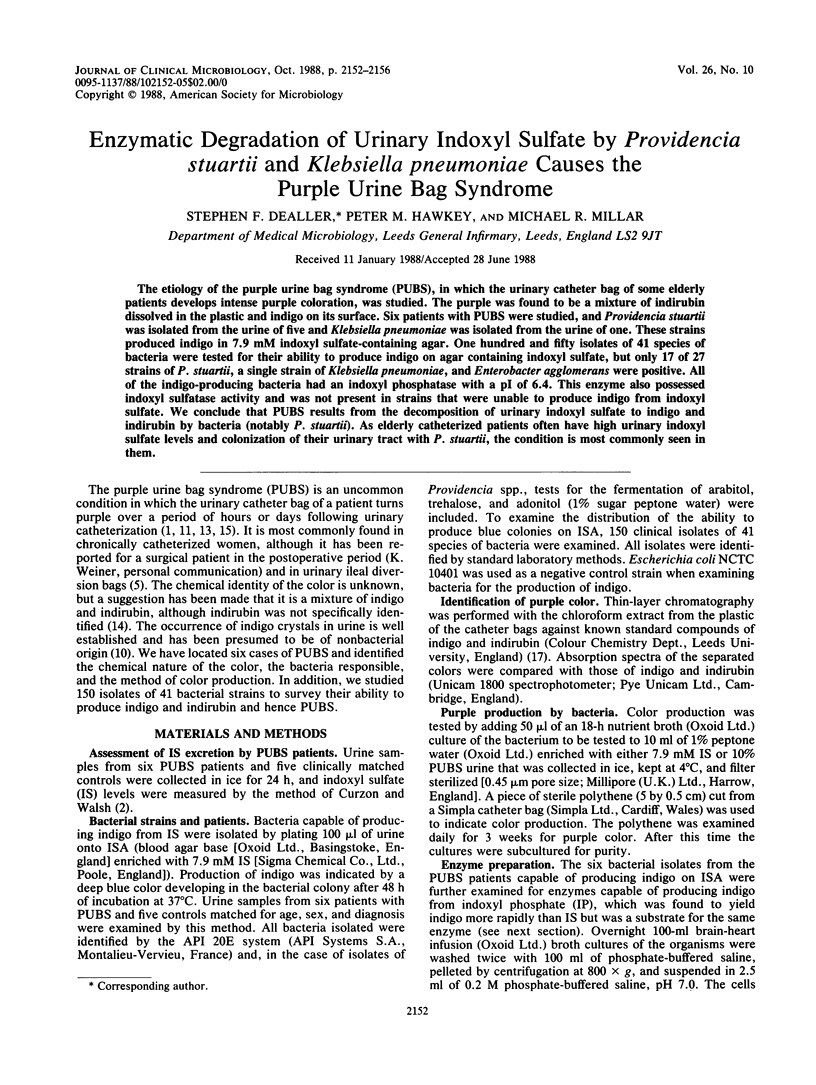
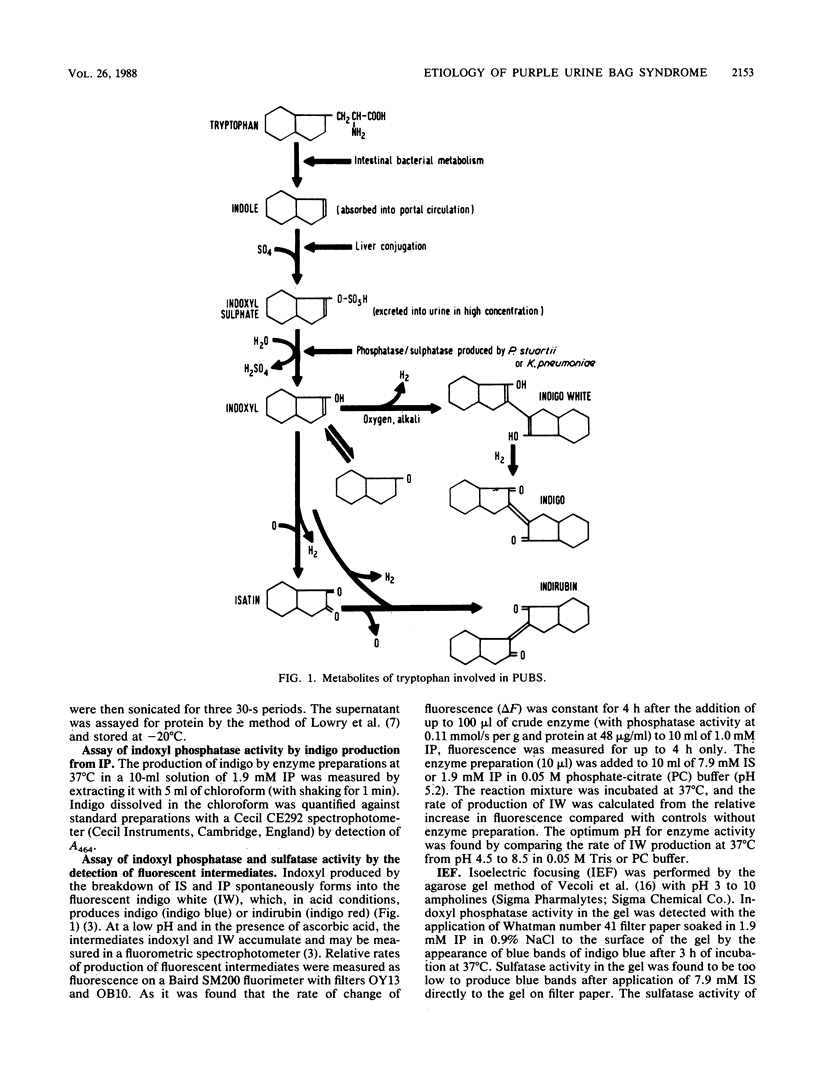
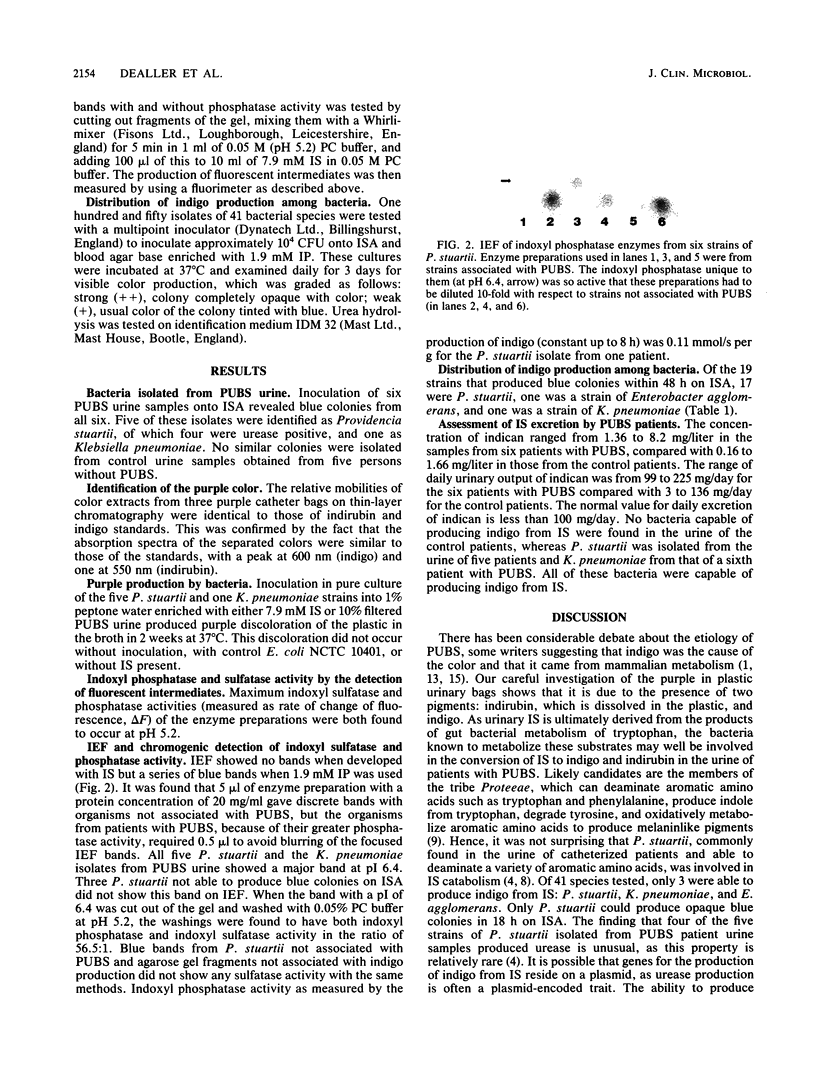
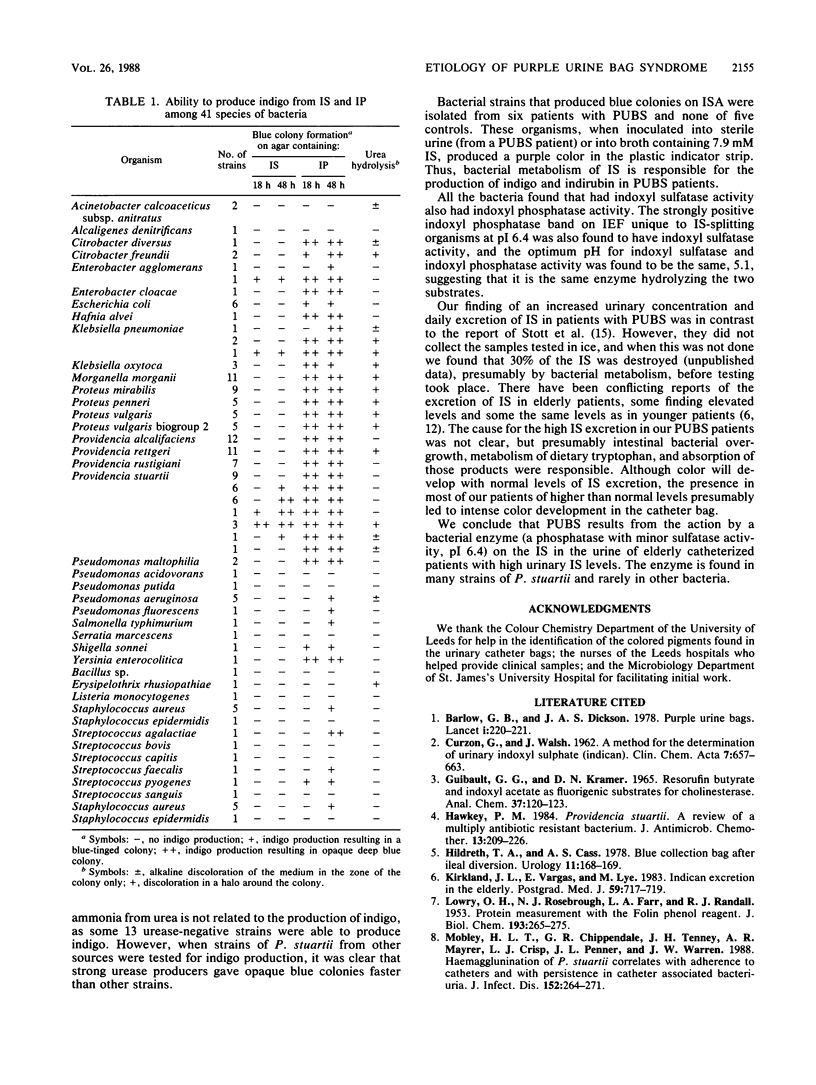
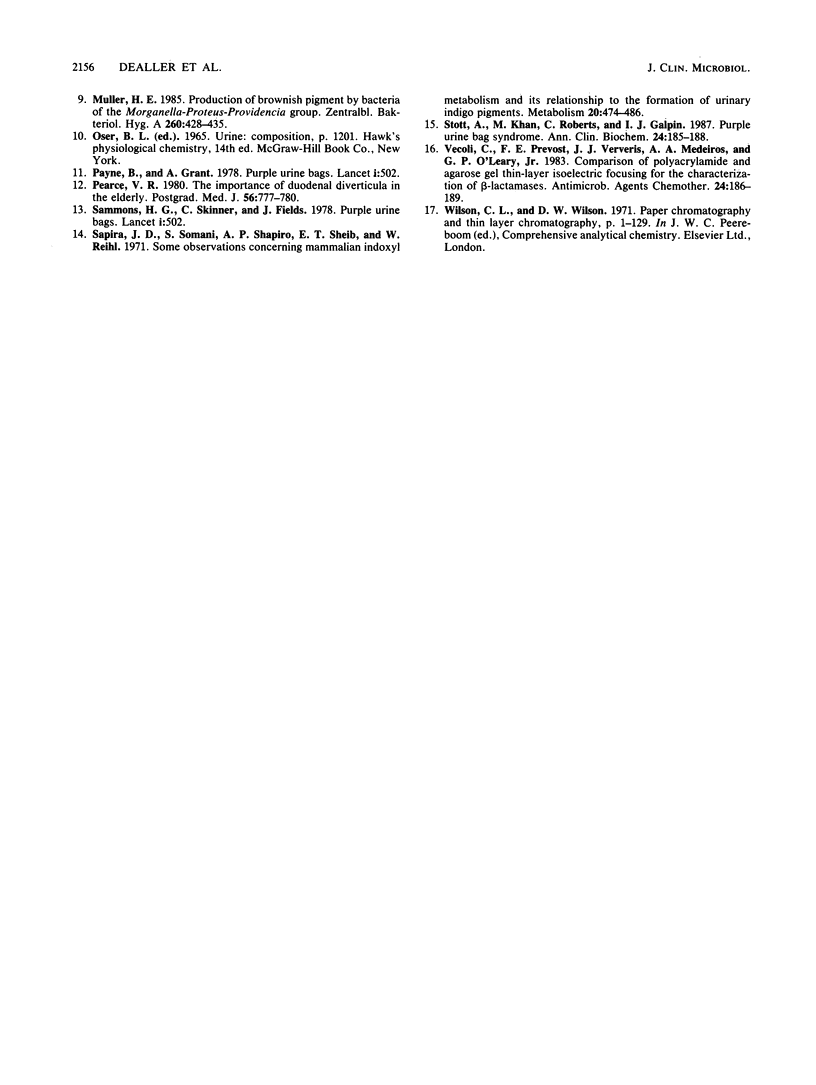
Images in this article
Selected References
These references are in PubMed. This may not be the complete list of references from this article.
- CURZON G., WALSH J. A method for the determination of urinary indoxyl sulphate (indican). Clin Chim Acta. 1962 Sep;7:657–663. doi: 10.1016/0009-8981(62)90147-x. [DOI] [PubMed] [Google Scholar]
- GUILBAULT G. G., KRAMER D. N. RESORUFIN BUTYRATE AND INDOXYL ACETATE AS FLUOROGENIC SUBSTRATES FOR CHOLINESTERASE. Anal Chem. 1965 Jan;37:120–123. doi: 10.1021/ac60220a031. [DOI] [PubMed] [Google Scholar]
- Hawkey P. M. Providencia stuartii: a review of a multiply antibiotic-resistant bacterium. J Antimicrob Chemother. 1984 Mar;13(3):209–226. doi: 10.1093/jac/13.3.209. [DOI] [PubMed] [Google Scholar]
- Hildreth T. A., Cass A. S. Blue collection bag after ileal diversion. Urology. 1978 Feb;11(2):168–169. doi: 10.1016/0090-4295(78)90099-7. [DOI] [PubMed] [Google Scholar]
- Kirkland J. L., Vargas E., Lye M. Indican excretion in the elderly. Postgrad Med J. 1983 Nov;59(697):717–719. doi: 10.1136/pgmj.59.697.717. [DOI] [PMC free article] [PubMed] [Google Scholar]
- LOWRY O. H., ROSEBROUGH N. J., FARR A. L., RANDALL R. J. Protein measurement with the Folin phenol reagent. J Biol Chem. 1951 Nov;193(1):265–275. [PubMed] [Google Scholar]
- Mobley H. L., Chippendale G. R., Tenney J. H., Mayrer A. R., Crisp L. J., Penner J. L., Warren J. W. MR/K hemagglutination of Providencia stuartii correlates with adherence to catheters and with persistence in catheter-associated bacteriuria. J Infect Dis. 1988 Feb;157(2):264–271. doi: 10.1093/infdis/157.2.264. [DOI] [PubMed] [Google Scholar]
- Müller H. E. Production of brownish pigment by bacteria of the Morganella-Proteus-Providencia group. Zentralbl Bakteriol Mikrobiol Hyg A. 1985 Dec;260(4):428–435. doi: 10.1016/s0176-6724(85)80063-8. [DOI] [PubMed] [Google Scholar]
- Pearce V. R. The importance of duodenal diverticula in the elderly. Postgrad Med J. 1980 Nov;56(661):777–780. doi: 10.1136/pgmj.56.661.777. [DOI] [PMC free article] [PubMed] [Google Scholar]
- Rambaud J. C., Nisard A., Modigliani R., Calmette C., Moukhtar M. S., Hill P. A., Besterman H. Hypercalcitoninaemia in vipomas. Lancet. 1978 Jan 28;1(8057):220–220. doi: 10.1016/s0140-6736(78)90666-9. [DOI] [PubMed] [Google Scholar]
- Sapira J. D., Somani S., Shapiro A. P., Scheib E. T., Reihl W. Some observations concerning mammalian indoxyl metabolism and its relationship to the formation of urinary indigo pigments. Metabolism. 1971 May;20(5):474–486. doi: 10.1016/0026-0495(71)90123-5. [DOI] [PubMed] [Google Scholar]
- Stott A., Khan M., Roberts C., Galpin I. J. Purple urine bag syndrome. Ann Clin Biochem. 1987 Mar;24(Pt 2):185–188. doi: 10.1177/000456328702400212. [DOI] [PubMed] [Google Scholar]
- Vecoli C., Prevost F. E., Ververis J. J., Medeiros A. A., O'Leary G. P., Jr Comparison of polyacrylamide and agarose gel thin-layer isoelectric focusing for the characterization of beta-lactamases. Antimicrob Agents Chemother. 1983 Aug;24(2):186–189. doi: 10.1128/aac.24.2.186. [DOI] [PMC free article] [PubMed] [Google Scholar]



